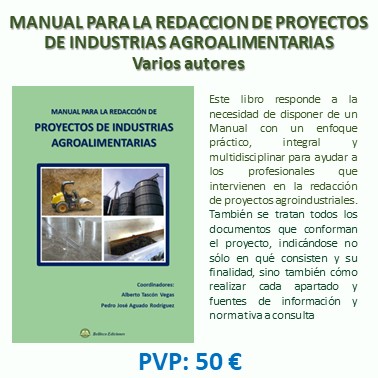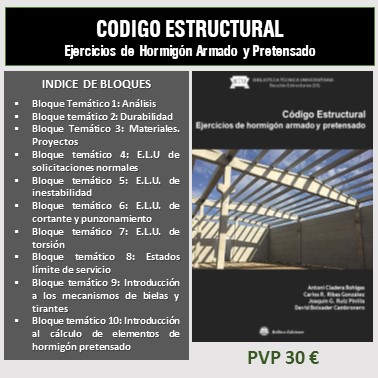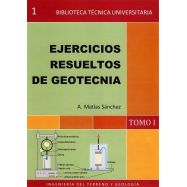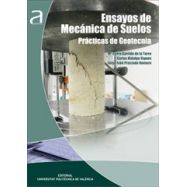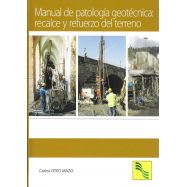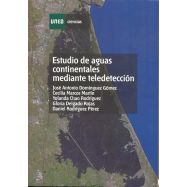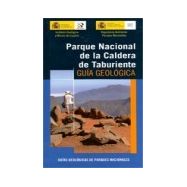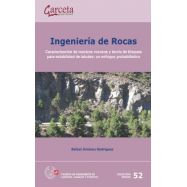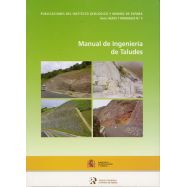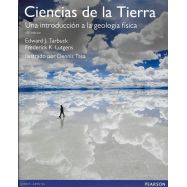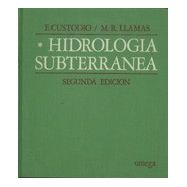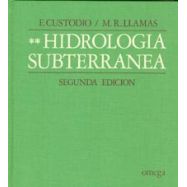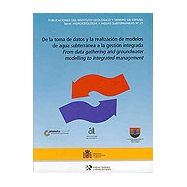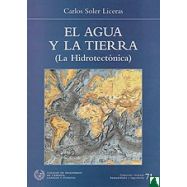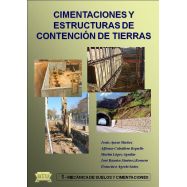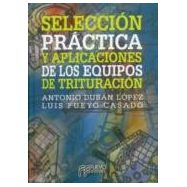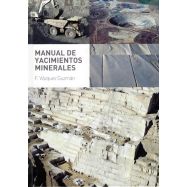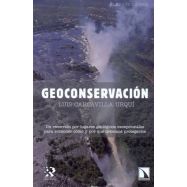Ningún producto
Materias
- BELLISCO EDICIONES. Nuestro Fondo Editorial
- FONDOS EDITORIALES EN DISTRIBUCION
- LIBROS TECNICOS EN INGLES
- ARQUITECTURA - URBANISMO
- AUTOMOCION - MOTORES - VEHICULOS
- AVIONICA - AERONAUTICA
- CALIDAD - EMPRESARIALES - GESTION
- CIENCIAS EXACTAS - MATEMATICAS
- CIENCIAS NATURALES Y APLICADAS
- CIENCIAS DE LA TIERRA - INGENIERIA DEL SUELO
- DICCIONARIOS TECNICOS
- ESTRUCTURAS - CONSTRUCCION
- FORMACION PROFESIONAL
- HIDRAULICA - INGENIERIA SANITARIA - AGUAS
- INGENIERIA CIVIL - OBRAS PUBLICAS
- INGENIERIA MECANICA E INDUSTRIAL
- INSTALACIONES . GENERALES, EN EDIFICACION E INDUSTRIALES
- MATERIALES
- MEDIO AMBIENTE
- NORMATIVA
- OPOSICIONES
- PREVENCION DE RIESGOS LABORALES
- PROGRAMAS INFORMATICOS DE CALCULO
- TECNOLOGIA DE LOS ALIMENTOS: Industrias: Conservación, envasado y cadenas alimentarias
- TELECOMUNICACIONES - INFORMATICA - TECNOLOGIA DE LA INFORMACION
- OUTLET DE BELLISCO: Descuentos de hasta el 80%
- RELIGION, TEOLOGIA, MORAL Y ESPIRITUALIDAD
- VARIOS
- OFERTAS
- PROMOCIONES
- NEWSLETTER
- CATEGORIAS DESTACADAS
- ULTIMAS NOVEDADES BELLISCO
- ARQUITECTURA SOSTENBILE
- URBANISNO
- MATEMATICAS EN GENERAL
- AGRONOMOS-AGRICULTURA-FORESTALES
- ELECTROMAGENTISMO-ELECTRONICA-ELECTRICIDAD
- INGª Y MECÁNICA DEL SUELO. CIMENTACIONES
- TOPOGRAFIA, FOTOGRAMETRÍA, GEODESIA
- EDIFICACION
- ANALISIS DE ESTRUCTURAS, RESISTENCIA DE MATERIALES, ELASTICIDAD, CALCULO MATRICIAL
- OFICIOS VARIOS
- ABASTECIMIENTO Y DISTRIBUCION DE AGUA
- PUENTES
- TUNELES Y OBRAS SUBTERRANEAS
- MAQUINAS Y MECANISMOS
- SOLDADURA
- CLIMATIZACION
- INSTALACIONES DE AGUA
- INSTALACIONES ELECTRICAS CIENCIA E INGENIERIA DE MATERIALES
- ENERGIAS RENOVABLES
- DESARROLLO SOSTENIBLE
- INFORMATICA-SISTEMAS-FORMACION-PROGRAMAS
-
MODELING AND COMPUTING FOR GEOTECHNICAL ENGINEERING: AN INTRODUCTION
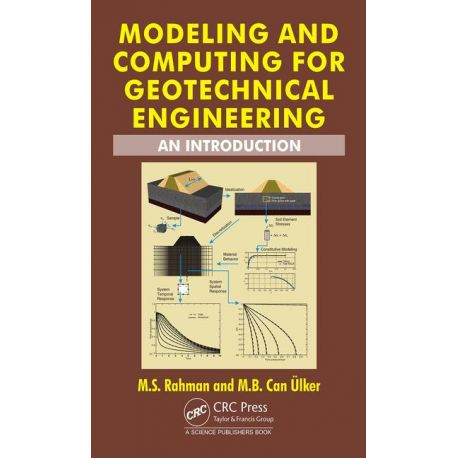 Ver más grande
Ver más grande Referencia: Código 07776
Septiembre de 2018 - M.S. Rahman, M.B. Can Ulker - Refª 7776
M.S. Rahman, M.B. Can Ulker
Septiembre de 2018 Páginas: 492
Código 7776 ISBN/EAN:9781498771672
Features
- The book includes MATLAB codes and MAPLE worksheets of simple analytical and numerical solutions of important daily life geotechnical problems with powerful and aesthetic visualization features in multi-D situations
- Teaches the fundamentals of analytical and numerical methods used to develop those solutions
- Serves as a basic textbook to a wide range of reader profiles from graduate students to researchers and engineers by combining the necessary theory and related practical applications
Summary
Modeling and computing is becoming an essential part of the analysis and design of an engineered system. This is also true "geotechnical systems", such as soil-foundations, earth dams and other soil structure systems. The general goal of ‘modeling and computing’ is to predict and understand the behaviour of the system subjected to a variety of possible conditions/scenarios (with respect to both external stimuli and system parameters), which provides the basis for a rational design of the system. The essence of this is to predict the response of the system to a set of external forces. The modelling and computing essentially involve the following three phases: (a) Idealization of the actual physical problem, (b) Formulation of a mathematical model represented by a set of equations governing the response of the system, and (c) Solution of the governing equations (often requiring numerical methods) and graphical representation of the numerical results. This book will introduce these phases.
MATLAB® codes and MAPLE® worksheets are available for those who have bought the book. Please contact the author at mbulker@itu.edu.tr or canulker@gmail.com. Kindly provide the invoice number and date of purchase.
Table of Contents
Preface
Introduction
BASIC MECHANICS
Stresses and Strains
Introduction
Reference Coordinate System: Notations
Strains
Stresses
Mohr’s Circle
Physical Laws and Governing Equations
Introduction
Idealizations
Total and Effective Stresses in Soils
Law of Conservation of Momentum: Equilibrium Equations
Law of Conservation of Mass
ELEMENTAL RESPONSE: CONSTITUTIVE MODELS
I. Introduction
II. Soil Behavior: From Experimental Results
III. Modeling of Soil Behavior
Elasticity
Elastic Constitutive Law
Plasticity Theory: Nonlinear Deformation of Soils
Introduction
Nonlinear Deformation of Soils
Elements of Plasticity
Yielding Criteria
Post-Yield Behavior
Perfect Plasticity
Hardening Plasticity
Loading/Unloading Criterion
Exercise Problems
Viscoelasticity and Viscoplasticity
Introduction
Viscoelastic Behavior: Fundamental Rheological Models
Viscoelastic Behavior: Composite Rheological Models
Formulation Methods in Viscoelasticity
1-D Viscoelastic Analysis of Soil Layers under Vertical Circular Loading
Viscoplasticity
Exercise Problems
SYSTEM RESPONSE: METHODS OF ANALYSES
Analytical Methods
Introduction
1-D Flow through a Land Mass: Island Recharge Problem
Regional Groundwater Flow: Steady State Seepage
1-D Deformation of a Soil Column
1-D Consolidation of a Soil Column: Decoupled Flow and Deformation
Contaminant Transport
1-D Coupled Flow and Deformation
2-D Coupled Flow and Deformation
Exercise Problems
Semi-Analytical Methods
Introduction
Stress Analysis
Quasi-Static Analysis of Multi-Layer Porous Media under Waves
Exercise Problems
Finite Difference Method
Introduction
Finite Difference Approximation of Derivatives
FDM for Consolidation (Parabolic) Equation
FDM for Seepage (Laplace) Equation: 2-D Steady State Flow
FDM for Groundwater Flow: Aquifer Simulation
FDM for Consolidation of a Layered System
FDM for Laterally Loaded Piles: Soil-Structure Interaction
Error, Convergence and Stability
Exercise Problems
Finite Element Method
Introduction
Direct Stiffness Method
Galerkin Method of Weighted Residual
FEM: 1-D Problems
FEM: 2-D Problems
Basic Element Formulations
The Principle of Minimum Potential Energy
Isoparametric Element Formulation
Exercise Problems
Appendices
A.1 Fourier Series and Fourier Transform
A.2 Laplace Transform
A.3 MATLAB Commands: FFT, IFFT, FFTSHIFT
A.4 Solution Flow Chart for the Analysis of a Viscoelastic Material
A.5 Analytical Solution of Wave-Induced Porous Soil Layer Response
A.5 Semi-Analytical Solution of Wave-Induced Multi-Layer Porous Soil Response
References
TAMBIEN LE PUEDE INTERESAR
- 35,78 €
- 14,00 €
- 46,80 €
- 16,00 €


